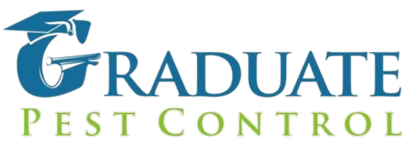IPM
Integrated Pest Management
Integrated Pest Management (IPM) is a sustainable, science-based strategy that minimizes risk and damage from pests by utilizing a thorough knowledge of ecosystems, organisms, and the relationship they have with their environments. It is a systematic program of inspection, identification, communication and problem solving. The IPM strategies that are practiced by Graduate Pest Control Technicians are steeped in the years of college education, science and 38 years of practical experience
Step 1. Inspection and Monitoring
The inspection for an established IPM program is designed to allow the IPM technician to conduct a visual examination of established monitoring stations, and the surrounding environment to interpret and correctly identify any situation that has occurred since the last inspection. Speaking to people during the inspection allows the IPM technician to become aware of a possible problem and to look for clues that maybe causing the problem.
Step 2. Proper Identification of Activity
During the inspection the technician is looking to see what has been trapped or left behind by a pest. The proper identification of trapped insects and the possible presents of rodents will help in the proper treatment method needed to remove the pest problem. The technician is also looking for structural deficiencies and sanitation problems that may be contributing to the pest problem.
Step 3. Habitat Modification
Habitat modification is the science of exclusion and repair. The addition of a screen over an air vent can eradicate the presence of birds, insects, and bats. The sealing of a hole around a pipe can stop a rodent or insect infestation. Repairing a leak in a water pipe can stop the presence of mosquitoes. The caulking of cracks and crevices can help reduce the presence of cockroaches and ants. The identification and removal of unsanitary conditions can help reduce a rodent population. The placement of a door seal can stop rodents and insects from entering a building. The use of a vacuum to remove rodent droppings or dead insects helps in removing the possibility of insect or rodent disease created by allergens. The use of a vacuum also aides in the inspection process. The use of bird spikes and netting can help remove a bird population from a structure. All of these techniques plus others can either reduce or eliminate the availability of one or more of the basic fundamentals needed for a pest problem to develop and survive. (See The Triangle of Life for more info)
Step 4. Pesticide Usages.
Habitat modification and trap monitoring are the foundation to every successful IPM program. The decision to use a pesticide in an IPM program is only made after extensively exploring other alternatives. This decision is not taken lightly. The use is very site selective and target specific, where the pesticide is necessary to assist in the pest elimination process of an IPM Program. The type of formula that is chosen is based on a pest’s feeding habits, behavior patterns and type of metamorphosis. The use of a rodenticide in a tamper resistant bait station is inconspicuously placed in an area where rodents are feeding and will help remove a rodent population while protecting people and their pets. Using an insecticide with a crack and crevice injector allows small amounts of insecticide to be placed directly into harborage areas where insects are mostly likely found. The use of insect baits and/or gel insecticides may be used to remove insects based on their feeding habits. The use of a sex-sterilent may be used to reduce an insect population by interfering with insect development causing the insect population to become sterile.
Step 5. Communications and Documentation.
No job is finished until the paperwork is done. A completed printout of a computer-generated worksheet will be emailed to the person responsible for the pest control program. This worksheet includes: pest findings found, structural and housekeeping deficiencies, corrective measures taken, and pesticide usage. A verbal explanation of any inspection findings and corrective measures will also be discussed with the client. In cases where a problem can not be corrected by a technician (plumbing leak) this information will be given to the person responsible for the program so that the problem can be corrected. “Each pest problem has its own unique situation and solution. Each pest problem also has very similar variables which are used to solve the puzzle.” – Arnold Katz
Get STarted With A Free Consultation
Don’t let pests take over your home. Schedule a consultation with Graduate Pest Control and enjoy a pest-free environment. Our experts are ready to provide you with top-notch service and peace of mind. Act now to safeguard your living space!
